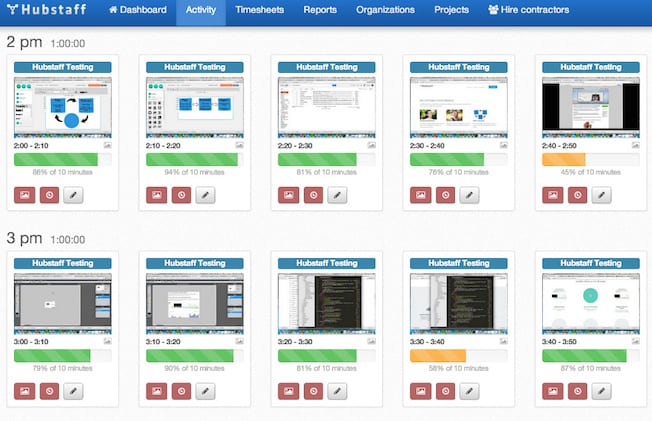In the digital age, creating engaging and effective content is paramount for any business. However, there’s an essential aspect that often goes overlooked: accessibility. Accessibility ensures that all users, including those with disabilities, can fully engage with and benefit from your offerings.
Not only is this a matter of inclusivity and social responsibility, but it also presents a significant opportunity to enhance user engagement and broaden your audience.
In this blog post, we’ll delve into the importance of accessible content and how it can drive engagement for your business.
Understanding Accessible Content
Accessible content is designed to be usable by everyone, including people with disabilities. Creating accessible content means considering users with visual, auditory, cognitive, or motor impairments.
By implementing accessibility best practices, you can ensure that your content reaches a broader audience and provides a better user experience for all.
Key Elements of Accessible Content
- Readable Text: Use clear, simple language and a readable font size. This makes your content more accessible to individuals with cognitive disabilities and those who are not fluent in the language.
- Alt Text for Images: Provide descriptive alt text for images to ensure that screen readers can convey the content of the images to visually impaired users. Alt text not only helps your users but is also an important SEO tool.
- Transcripts and Captions: Include transcripts for audio content and captions for videos to support users with hearing impairments.
- Keyboard Navigation: Ensure that your website can be navigated using a keyboard, which is crucial for users with motor disabilities.
- Color Contrast: Use high color contrast between text and background to make your content more readable for visually impaired users.
- A Clear Structure: Use headings, table headers, and lists to break your content up in a way that makes it easy to skim.
- Meaningful Links: Rather than using “click here to learn more” as your anchor text, choose text that describes what the user will find on the page – as stated in this content accessibility checklist.
Benefits of Accessible Content
1. Enhanced User Experience
Accessible content creates a more inclusive and seamless user experience. When users can easily access and understand your web content, they are more likely to engage with it. This positive experience can lead to higher satisfaction and increased loyalty.
2. Broader Audience Reach
By making your content accessible, you open the door to a wider audience. According to the World Health Organization, over one billion people, or about 15% of the world’s population, live with some form of disability. By neglecting accessibility, you could be missing out on a significant portion of potential customers.
3. Improved SEO
Search engines favor websites that provide a good user experience, and accessibility is a key component of this. Features like alt text for images and video transcripts can help search engines better understand and index your content, potentially improving your search rankings.
4. Legal Compliance
In many regions, there are legal requirements to make digital content accessible. By adhering to accessibility standards, you can avoid potential legal issues and demonstrate your commitment to inclusivity.
How to Implement Accessible Content
Here are some general web content accessibility guidelines to consider:
Conduct an Accessibility Audit
Start by assessing your current content and website for accessibility issues. Use tools such as WAVE or Axe to identify areas needing improvement and conduct a thorough content audit.
Consider Users of Older Devices or on Slow Connections
One mistake designers often make is testing websites on their own devices from their offices. Users in rural areas may have a slow connection, making javascript-heavy websites difficult to use. Older browsers or slower devices may make your site perform in unexpected ways.
Educate Your Team
Ensure that everyone involved in content creation understands the importance of accessibility and knows how to implement best practices. This includes writers, designers, and developers.
As part of the training, show your team what the site looks like or how someone with a specific disability might interact with the content to help build empathy and reinforce the importance of accessibility.
Design with Accessibility in Mind
Incorporate accessibility from the beginning of the design process. This proactive approach is more efficient than making adjustments after the fact. It’s normal to want your website to look a specific way or to be an “experience,” but it’s important to provide users with a way to get straight to the content even if they can’t enjoy the audio or visual elements of your design.
Use Accessible Content Management Systems
Choose a content management system (CMS) that supports accessibility features. Many popular CMS platforms offer plugins or built-in tools to help you create accessible content.
For example, WordPress has plugins that will automatically set descriptive alternative text for images, improving the experience for visually impaired users.
Regularly Update and Test Your Website
Accessibility standards are constantly evolving. The European Accessibility Act will take effect on June 28, 2025, and will require most websites and other digital products or services to conform with WCAG 2.1 Level AA standards.
Staying up-to-date with these standards isn’t just a good business decision; it’s a legal responsibility for organizations operating in Europe.
Real-World Examples of Good Accessible Design
Many companies have successfully implemented accessible content strategies and seen significant benefits. For example, the BBC provides extensive accessibility features across its platforms, including screen reader support and customizable text sizes.
This commitment to accessibility has helped the BBC reach a broader audience and enhance user satisfaction. Similarly, e-commerce giant Shopify offers comprehensive accessibility features for its merchants, enabling them to create inclusive shopping experiences.
This not only improves the user experience but also helps merchants tap into a larger customer base.
Conclusion
Accessible content is not just a moral imperative but also a strategic advantage. By prioritizing accessibility, you can enhance user engagement, reach a broader audience, improve SEO, and comply with legal requirements.
The inclusive advantage is clear: accessible content drives engagement and fosters a more loyal and satisfied audience.
Ready to Make Your Content More Accessible?
If you’re ready to enhance your content strategy with accessibility in mind, we’re here to help. Book a free consultation today to learn more about how accessible content can benefit your business.


